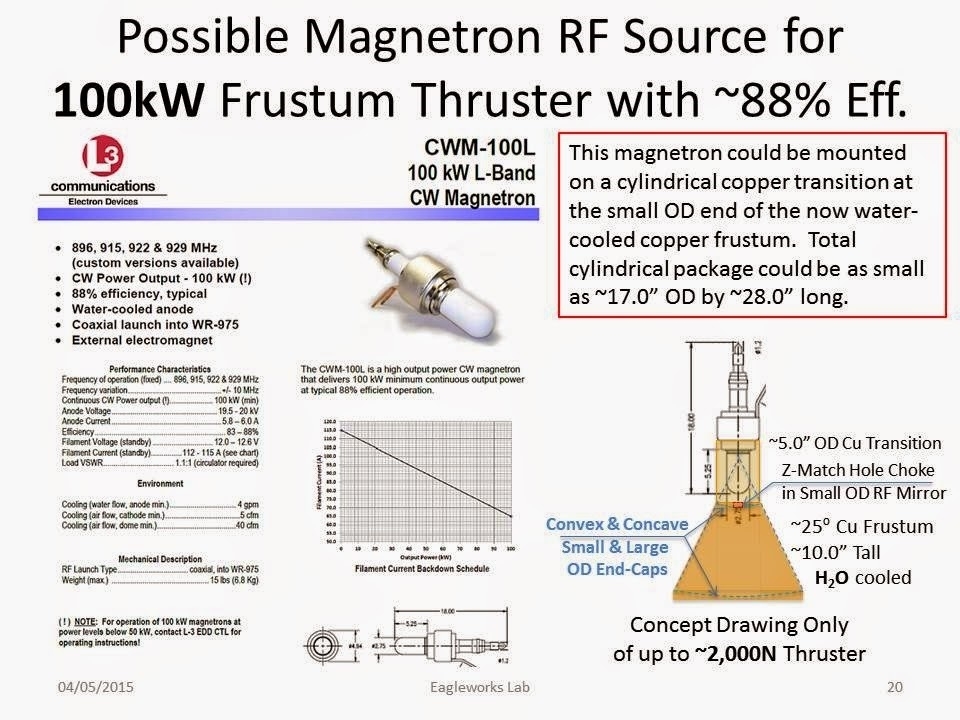Could EmDrive save the planet from a world-ending asteroid strike?
EmDrive inventor Roger Shawyer excited that Salvation is featuring controversial space propulsion tech.

Controversial space propulsion technology EmDrive, which has set the international scientific community alight, has officially reached the mainstream – it is currently playing a starring role in new US sci-fi suspense series Salvation.
Salvation, which debuted in July on CBS, is about an Elon Musk-esque tech billionaire and an MIT graduate student. They team up on a top-secret government project to build an EmDrive, in order to prevent an imminent catastrophic, end-of-the-world asteroid strike.
Considering just how controversial the technology is, and the fact that many people still do not believe that it works – despite the release of a peer-reviewed paper by Nasa's Eagleworks laboratory in November 2016 – it is surprising to see EmDrive make its way onto prime-time TV.
But for Roger Shawyer, the British engineer who invented the EmDrive, its appearance in a major US show is a hugely positive sign, particularly since it appears that the EmDrive design featured on the show was inspired by a Nasa Eagleworks technical drawing of the device.
"There was absolutely no contact between me and the scriptwriters of Salvation. They may not even know it's a British invention," Shawyer told IBTimes UK. "I'm intrigued – if you go to our website and wade through it, you will see that way back in 2006, we did propose EmDrive for asteroid diversion."


"Difficult, dangerous and expensive"
Shawyer, who is busy working on the third generation of the controversial space propulsion device, has managed to catch several episodes of Salvation. Although he has no input in the show, he says that the depiction of the EmDrive is not wrong, especially in episode three Truth or Darius, where a large EmDrive cavity blows up while being tested by the US government.
The EmDrive is the invention of British scientist Roger Shawyer, who proposed in 1999 that based on the theory of special relativity, electricity converted into microwaves and fired within a truncated cone-shaped closed metal cavity causes the microwave particles to exert more force on the flat surface at the large end of the cone (i.e. there is less combined particle momentum at the narrow end due to a reduction in group particle velocity), thereby generating thrust.
His critics say that according to the law of conservation of momentum, his theory cannot work as in order for a thruster to gain momentum in one direction, a propellant must be expelled in the opposite direction, and the EmDrive is a closed system.
However, Shawyer claims that following fundamental physics involving the theory of special relativity, the EmDrive does in fact preserve the law of conservation of momentum and energy.
"We've never had a spectacular explosion like that, but we have had some hairy moments. If you discount the derring-do side of it, there are clear elements of understanding there. The show emphasises that it's difficult, dangerous and expensive, and it is all of those things," said Shawyer.
"People in the space and aviation industry I know on the other side of the pond love it. It's a beautiful way of getting it out to the public without anyone being put in jail for releasing classified information. In the show's view, this is a very advanced technology that only American super brains can work out. It's wonderful, I love it actually!"
Shawyer would like to see Salvation credit the UK with having invented the EmDrive, but even if it doesn't, he feels it is an important step towards preparing the public for a coming revolution in the space industry.
"Right or wrong, this is the ideal way to prepare the public for what is going to hit them in the next decade," he said.
"[The EmDrive] is a true example of conservation of energy. There's no magic to this, it's true physics at work. The sensible people take notice. It's important that people understand this is real science."
© Copyright IBTimes 2025. All rights reserved.






















